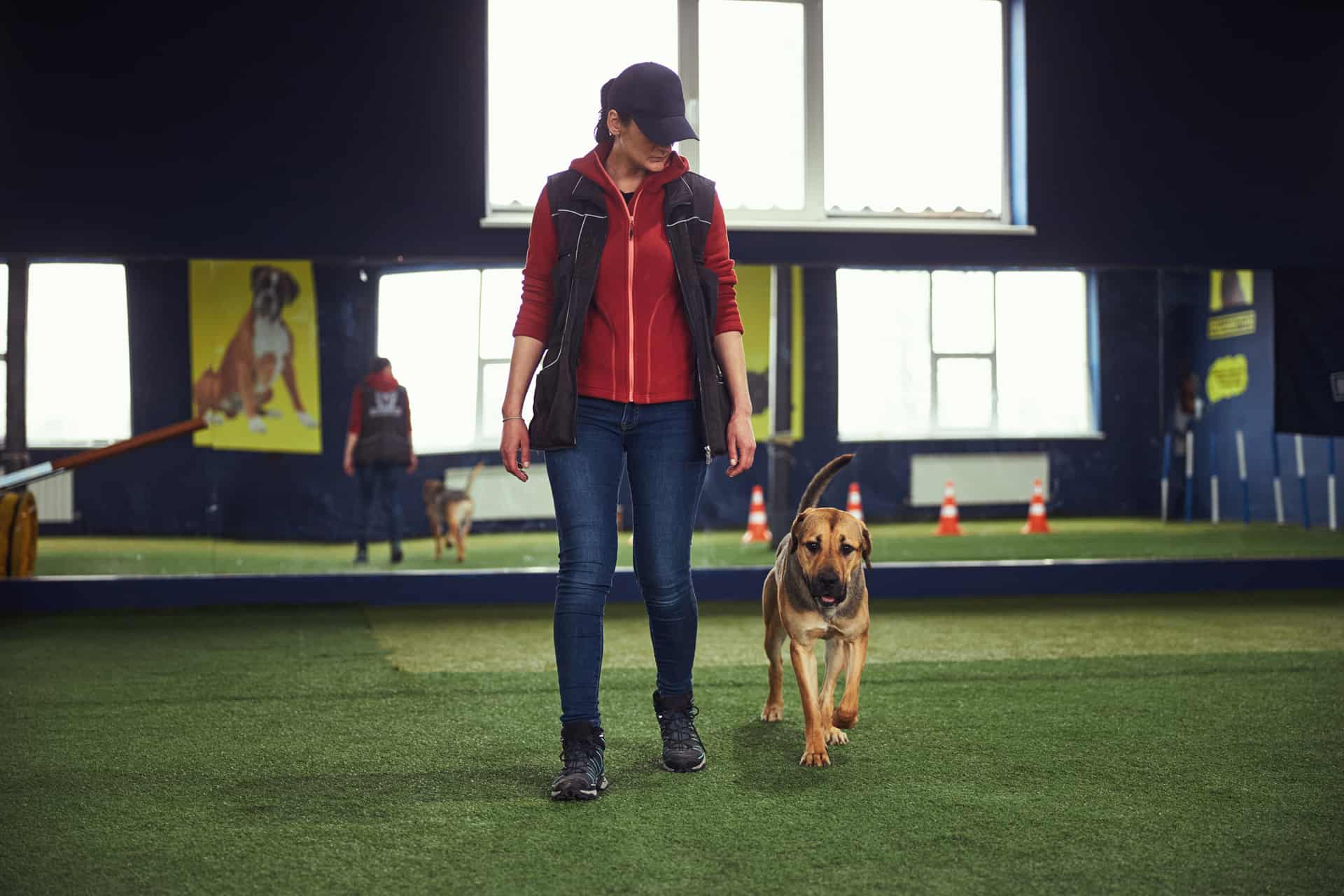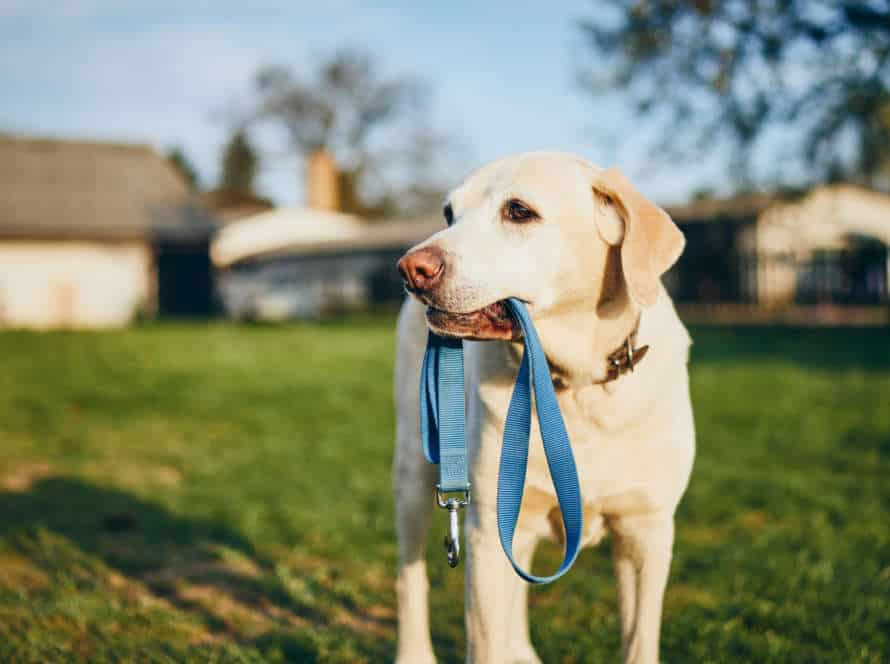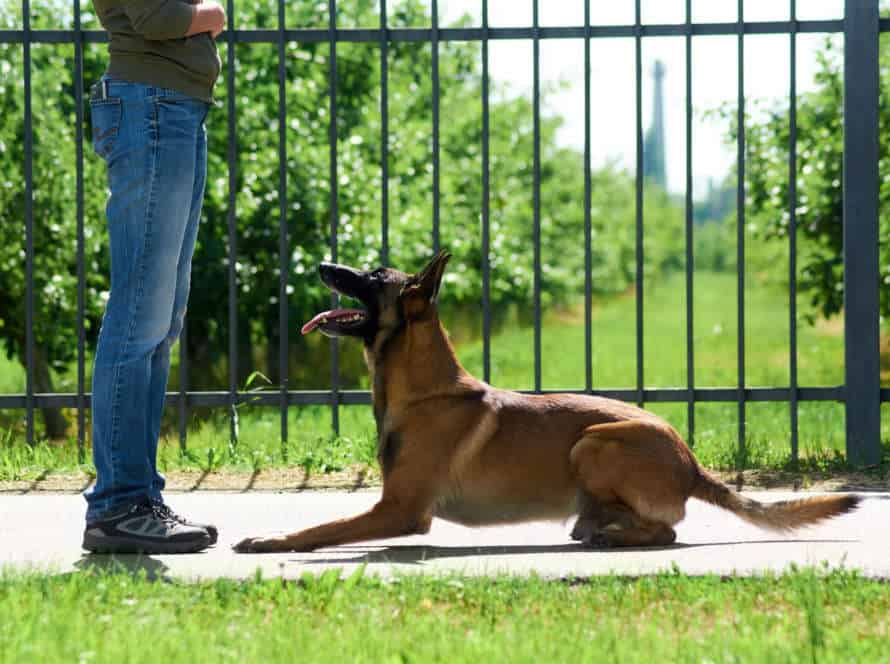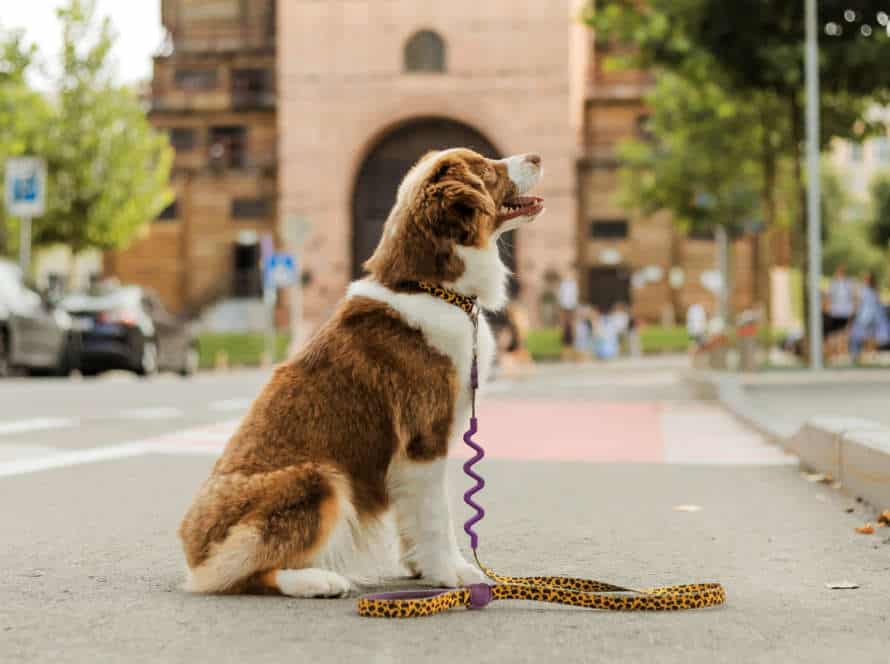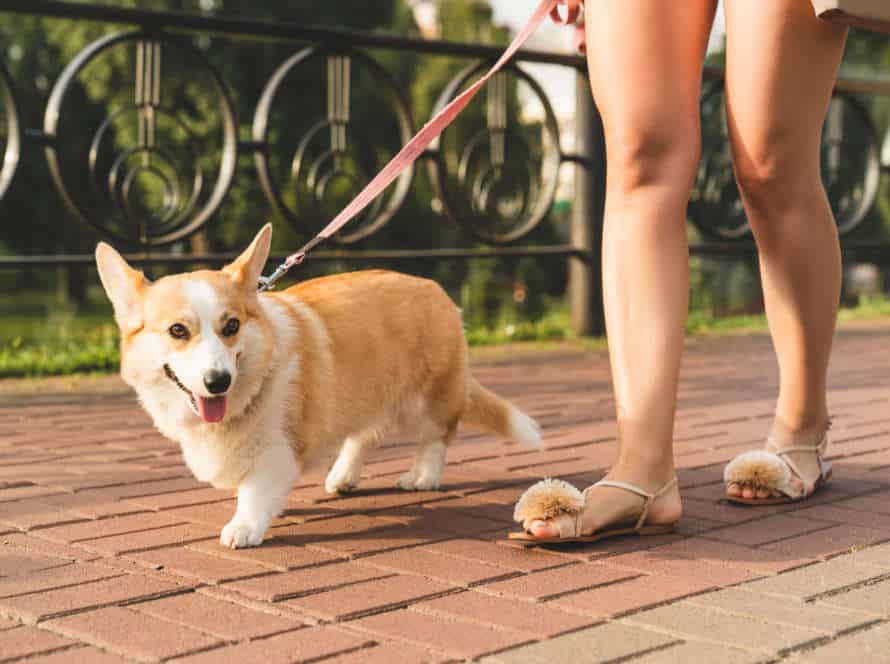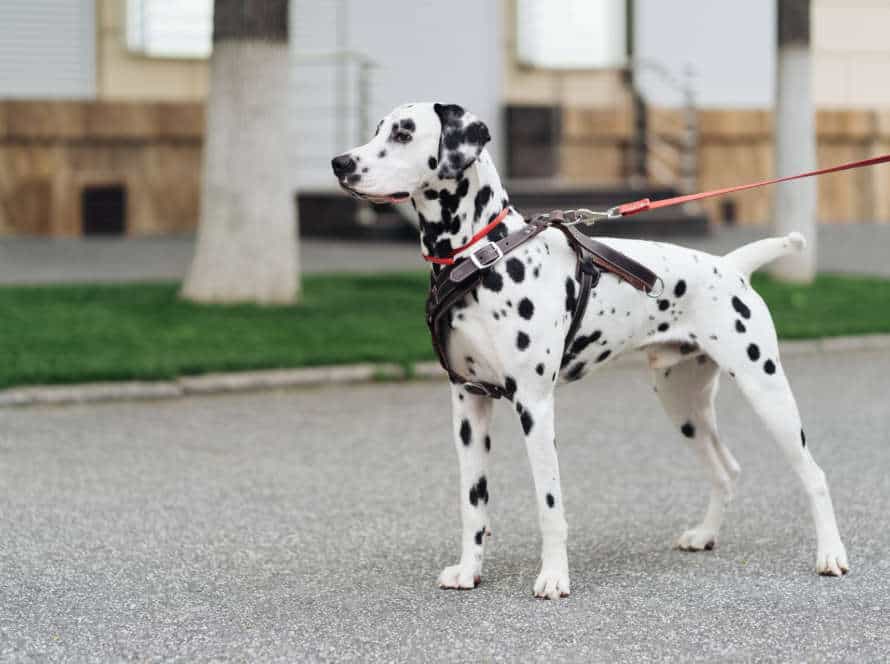Troubleshooting Common Heel Command Training Challenges
Heel command training can be tough for both dog and owner. Here are some common issues and ideas to help:
- Leash pulling? Your pup hasn’t learned the rules of walking yet. Keep leash lengths short and reward when your pup complies.
- Wandering away? Distractions can be a problem. Use treats and verbal cues to keep them close.
- Lagging behind? They may be tired, bored, or not used to long walks. Stay consistent and gradually increase walk lengths.
- Refusing to walk? Anxiety or fear may be the cause. Bonding and trust-building can help them feel more comfortable.
Remember, training takes time and patience – stay positive!
Common Heel Command Training Issues
Training a pup to stay by your side is a tough mission. It needs lots of time and patience. Loads of owners find it difficult to make their furry friends follow them, and obey other commands when on a walk.
To help them succeed, it’s important to know the most common heel command training issues people have with their doggos. In this article, we will chat about the common heel command training struggles and how to fix them.
The Dog Keeps Forgetting the Heel Command
Forgetting the “heel” command is common when training a dog. Let’s troubleshoot some challenges.
Consistency is a must. Always use the same verbal cues and body language.
Dogs have short attention spans. Training sessions should be short and straightforward.
Distractions can cause the dog to forget the “heel” command. Train in a quiet place first, then gradually increase the distractions.
Reinforce good behavior with positive reinforcement. Treats, praise, or affection are great rewards.
Regular training is key to reinforcing the “heel” command. A short daily session works best.
By being consistent and aware of these issues, you can successfully train your dog to remember the “heel” command.
The Dog Pulls on the Leash During Heel Training
If your pup pulls on its leash during heel training, it can be maddening and may thwart their capability to learn the heel command properly. Here are some tips to help you sort this regular problem during heel command training:
- Firstly, start the tutoring in a silent and distraction-free atmosphere to stay away from overstimulation.
- Secondly, use a shorter lead to give you more control and to stop the pup from yanking.
- Thirdly, end the training session if your pup gets overly amped or starts yanking on the leash. Re-start the session only when your dog has settled down.
- Fourthly, use positive reinforcement like snacks or verbal compliments when your pup follows the heel command rightly.
- Lastly, be patient and consistent with your training system. Keep in mind that every dog is distinct and demands varying levels of instruction and forbearance.
The Dog Gets Distracted During Heel Training
One common problem that occurs during heel training is when the pup gets distracted and loses focus. Many pet owners have this issue.
To fix it, try these!
- Begin in an environment without any distractions. As your dog becomes more comfortable, add in distractions gradually.
- Don’t make the training too long. Keep it short and enjoyable instead of tedious.
- Use a treat or toy to keep your doggo’s attention on you during the session.
- Utilize positive reinforcement to make heel training a positive experience for your pup.
By doing these four steps, you’ll be able to help your pup master the important heel command and avoid distractions!
Techniques to Address Common Heel Command Training Issues
Teaching your dog the heel command can be tricky. You need good communication between you and your pup. It can take more effort than you think. Here are a few techniques that may make it easier.
We’ll discuss common problems with heel command training and how to solve them.
Repetition and Consistency in Training
Repetition and consistency are essential when it comes to training your pup. However, many pet owners experience common issues that can impede their furry friend’s progress. Not to worry, there are solutions!
To stop your dog from pulling, stop walking when they pull and go in the opposite direction. If they walk alongside you without pulling, reward them.
If your pup is lagging behind, give them treats and praise when they stay close to you. Increase the distance between you gradually until they learn to heel.
To help them remember commands, break training sessions into smaller chunks and only focus on one command at a time.
These tips will help you tackle heeling command problems with ease. Remember: repetition and consistent positive reinforcement lead to success.
Pro tip: Use high-value treats like boiled chicken or cheese to motivate your pup during training!
Positive Reinforcement for Good Behavior
Positive reinforcement can help you address heel command training issues. Here are some tips:
- Reward good behavior. Treat or praise your pup when they cooperate and follow commands. This will motivate them to repeat those actions.
- Consistency is key. Use the same commands and rewards each time. No mixed signals!
- Focus on problem areas. If they’re struggling, give them extra attention and practice until they master the skill. Then, reward them.
- Train regularly. Short, daily sessions are better than sporadic, long ones.
These techniques can help you troubleshoot challenges and build a strong bond with your pup.
Use of Rewards and Treats in Training
Rewards & treats can be a great motivator when teaching a dog the heel command. But all rewards aren’t equal, so use ’em effectively! Here are some techniques to troubleshoot common challenges:
Issue 1: Dog pulls on the leash.
Solution: Keep high-value treats (like cooked chicken) near your thigh in your left hand. Reward pup when they walk nicely at your side.
Issue 2: Dog gets distracted.
Solution: Use verbal cues like “focus” & “watch me.” Reward pup every time they make eye contact with you.
Issue 3: Dog won’t stay at your side.
Solution: Use a treat or toy as a lure. Gradually decrease treat frequency as pup becomes consistent.
Pro Tip: Positive reinforcement & rewarding pup with things they like is the key to success!
Proper Use of Leash and Collar in Heel Training.
Leash & collar? Crucial for heel training! Common issues? Troubleshoot ’em!
Pulling? Use a short, sturdy leash & comfy collar. Stop moving & gently tug on the leash when pup pulls. Focus back on you? Resume walking.
Lagging? Verbal & physical encouragement. Treats, attention & praise.
Distractions? Change directions, vary pace & use verbal cues. Head collar or no-pull harness? For aggressive or easily distracted pooches.
Incorrect position? Train pup to walk left side, head at your knee. Use verbal cues & treats to reward.
Pro Tip: Positive reinforcement – treats & praise – helps keep pup motivated & focused on heel training.
Frequently Asked Questions
Q: Why does my dog not respond to the heel command?
A: Your dog may not have fully understood what the heel command means. Start by practicing the command in a distraction-free environment and rewarding them with treats when they follow through. Consistent training and positive reinforcement will help them associate the command with the desired behavior.
Q: What should I do if my dog constantly pulls on the leash while heeling?
A: This can be a common challenge when training your dog to heel. Try switching to a shorter leash, or using a head collar or no-pull harness to help control their movements. You can also practice stopping or changing directions whenever your dog pulls, to teach them that pulling will not get them where they want to go.
Q: My dog keeps lagging behind while heeling. How can I fix this?
A: If your dog lags behind instead of walking beside you, you can try increasing the frequency or value of treats you give them during training. You can also take shorter, faster steps to encourage your dog to keep up with you. Over time, your dog will learn to stay close to you and maintain the proper heel position.
Q: How long does it take for my dog to learn the heel command?
A: The amount of time it takes for your dog to fully learn the heel command can vary depending on the dog’s age, breed, and level of prior training. Consistent and regular training sessions can help speed up the learning process, but it may take several weeks or even months for your dog to fully master the skill.
Q: Can I use punishment to train my dog to heel?
A: Using punishment to train your dog can be counterproductive and can result in behavioral issues such as fear, anxiety, and aggression. Positive reinforcement techniques such as treats, toys, and praise are much more effective and safe ways to train your dog to heel.
Q: My dog is too excited and hyper to heel. What should I do?
A: If your dog is too excited and hyper to focus on heeling, it may help to redirect their energy towards other forms of exercise, such as playing fetch or going for a run. Once they have released their excess energy, they may be better able to focus on heeling exercises. Consistent training and practice can also help calm down hyperactive dogs and teach them to focus on commands.

